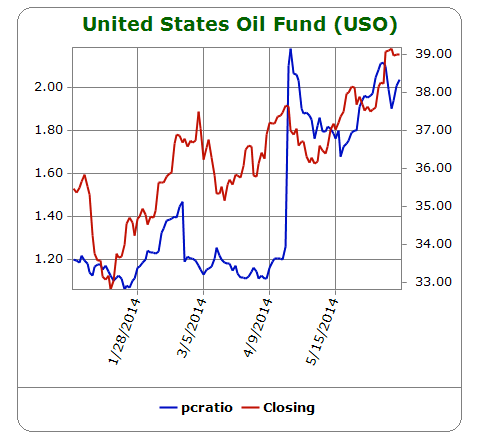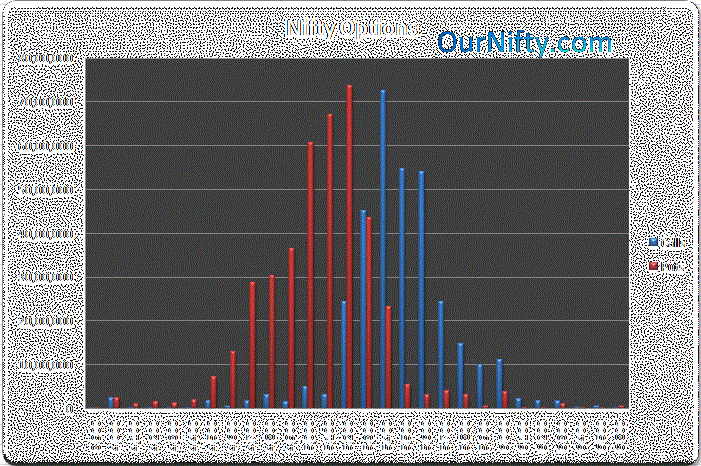Open Interest Stock market guide for beginners
Post on: 3 Июнь, 2015 No Comment

Open Interest also know as OI, is the total number of options and futures contracts that are not closed on a particular day. As you might be aware of volume in a particular stock in equity market, option trading involves the creation of a new option contract when a trade is placed. Open interest will tell you the total number of option contracts that are currently open.
Open Interest is mostly used to confirm a trend for a particular futures contract, For eg, lets look at Reliance 1000 May CALL, the open interest might tell us that there have been 5 options open in the month of May, a trader might then wonder does this refer to the number of contracts bought or sold.
When a trader buys or sells an option, the transaction needs to be entered as either an opening or a closing transaction. If he buys 5 RELIANCE May 1000 CALL, he is buying the calls to open, i.e he is opening his position in a futures contract, which causes the Open interest to rise by 5, and then after sometime(within) the month he decides to sell his contract i.e close his position in a particular contract, then he is causing the open interest to go down by 5.
Open interest applies primarily to the futures market, it helps the measure the flow of money into the futures Market. For each seller of a futures contract (eg RELIANCE 1000 CALL) there must be a buyer of that contract. Thus a seller and a buyer combine to create only one contract.
A rise in open interest in a futures contract along with its price indicates bullishness, which means investors are creating long positions and vice versa.
The open interest position that is reported each day represents the increase or decrease in the number of contracts for that day, and it is shown as a positive or negative number.
Advantages of monitoring Open Interest
Changes in the Open Interst as mentioned earlier can help a trader interpret the future trend of a particular contract.
Open Interest RISING -> Indicates that the present trend (up, down, flat) will continue
Open Interest FALLING-> Indicates that the prest trend(up, down, flat) is likely to change or is coming to and end
Open Interest is the total number of outstanding contracts that are held by market participants at the end of the day.
It can also be defined as the total number of futures contracts or option contracts that have not yet been exercised (squared off), expired, or fulfilled by delivery.
Open interest applies primarily to the futures market. Open interest, or the total number of open contracts on a security, is often used to confirm trends and trend reversals for futures and options contracts.
Open interest measures the flow of money into the futures market. For each seller of a futures contract there must be a buyer of that contract. Thus a seller and a buyer combine to create only one contract.
Therefore, to determine the total open interest for any given market we need only to know the totals from one side or the other, buyers or sellers, not the sum of both.
The open interest position that is reported each day represents the increase or decrease in the number of contracts for that day, and it is shown as a positive or negative number.
How to calculate Open Interest
Each trade completed on the exchange has an impact upon the level of open interest for that day.
For example, if both parties to the trade are initiating a new position ( one new buyer and one new seller), open interest will increase by one contract.

If both traders are closing an existing or old position ( one old buyer and one old seller) open interest will decline by one contract.
The third and final possibility is one old trader passing off his position to a new trader ( one old buyer sells to one new buyer). In this case the open interest will not change.
Benefits of monitoring open interest
By monitoring the changes in the open interest figures at the end of each trading day, some conclusions about the days activity can be drawn.
Increasing open interest means that new money is flowing into the marketplace. The result will be that the present trend ( up, down or sideways) will continue.
Declining open interest means that the market is liquidating and implies that the prevailing price trend is coming to an end. A knowledge of open interest can prove useful toward the end of major market moves.
A leveling off of open interest following a sustained price advance is often an early warning of the end to an uptrending or bull market.
Open Interest — A confirming indicator
An increase in open interest along with an increase in price is said to confirm an upward trend. Similarly, an increase in open interest along with a decrease in price confirms a downward trend. An increase or decrease in prices while open interest remains flat or declining may indicate a possible trend reversal.
Copyright@ 2014. All Rights Reserved.














